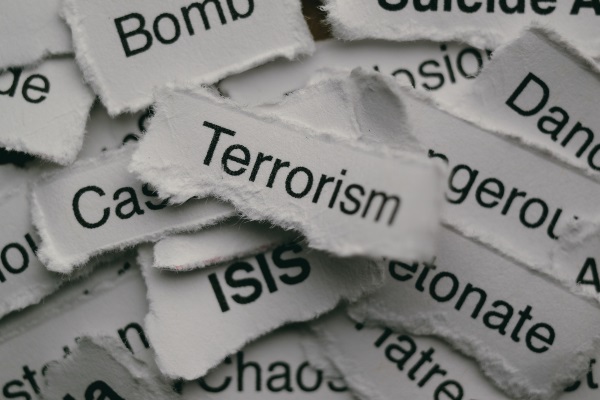Following publication of a report into how prepared London is for a terrorist incident, Matt Miller considers what the implications are for schools.

As autumn descends on a year that will long be remembered for a litany of terrorist atrocities across the country, notably in London and Manchester, I thought I would have another look at Lord Toby Harris’s independent review, ‘London’s preparedness to respond to a major terrorist incident’.
Written in October 2016 at the request of the mayor of London, the review published 127 recommendations focusing on how the people of London could be kept safe from the increasingly unpredictable threat of terrorist activity and how the services who sought to protect us from such incidents could be better prepared.
Although London-centric in its detail, the new wave of terrorism described in the report has ramifications across the land. Marauding Terrorist Firearms Attacks, or MTFA as the acronym goes, are not hostage to postcodes; they can and do strike fear and despair into the hearts of even the most unsuspecting communities.
Since its publication, there has been an alarming change in the methodologies deployed by those who seek to wreak havoc and evil, with vehicles and bladed weapons becoming tactics of choice.
As worrying as all of this is, I wonder what the implications for schools are. Are we doing enough to keep our children and staff safe? Should we be doing more? Where is the tipping point between sensible and proportionate response to school security and ’overkill’, as I’ve heard said?
Of course, schools should not resemble fortresses and lessons should not be taught in bunkers. Of course, our children should be shielded from the sickening sights that are all too frequently beamed into front rooms and portable devices. But where is the line drawn?
We should not give in to terrorists’ is the emotive cry of many, who do not want to surrender ‘normality’ to the blood-drenched hands of cowards and murderers.
I understand their resolve, but it does remind me of the time when the world changed for schools when Dunblane Primary School became synonymous with tragedy on an unprecedented scale. The massacre that unfolded on that in March 1996 with the murder of 16 pupils and a class teacher was to lead to an unprecedented tightening of school security across the country.
Sometimes events like this force people to shift their thinking and realise that prevention is better than cure. Should it take an incident of appalling magnitude to make us revisit our policies and protocols so we are better prepared if there is a next time?
Interestingly, the report acknowledges that even in the absence of any current threat directed specifically at schools, ’it is important that they are prepared in the event of an attack’. This leads to Recommendation 121:
'The Department for Education should build on the model of having a designated governor responsible for safeguarding and ensure that all schools in London appoint a governor responsible for ensuring security and terrorism preparedness. They should require all schools to have full preparedness plans in place, with requirements that they are tested.
'If the Department for Education do not consider this valuable nationally, the Mayor should ensure it is implemented in London’s schools.'
Lord Harris is quite clear in his assertion that governors should play a lead role in the ongoing quest to make schools safe. Whether it is necessary to apply a label of ’terrorism preparedness’ link governor (or something similar), I’m not so sure.
People often get het up with labels which is an unwanted diversion from his main point about taking responsibility for the oversight of schools being secure environments, so far as is reasonable, and that the pupils and staff within them are prepared for a terrorist incident, again, so far as is reasonable.
Governors should play a lead role in the ongoing quest to make schools safe
In my travels as a national leader of governance I have been present in the company of a headteacher who positively baulked at the idea of conducting a ‘lock down’ drill in their school as a simulated terrorism exercise.
’Not on my watch,’ he vented. ‘Think of the damage it would do to the kids’. Handled wrongly he may have a point, but I couldn’t help musing about his school website where resilience was firmly rooted within their values statement.
Not all headteachers share that view however, as I can testify, to those children who have hunkered under their school desks to avoid swarms of bees descending upon then and even an escaped grizzly bear from a local zoo! I so admired how, through thoughtful and creative ingenuity, they took the sting out of such a drill to the point where the children actually enjoyed it.
There are always likely to be inconsistent approaches and differing viewpoints on how far schools should go in preparing their pupils for the worst scenarios. A ‘one-size-fits-all’ solution is unlikely to meet the needs of a complex and multi-faceted threat to the communities in which we live.
However, copying and pasting risk assessments from one school to another is most definitely not the answer. Each school – and within it, each governing body should take a long and hard look at how they measure up to the insidious threat which blights our world and ask ’are we doing enough?’
 Become an Optimus member
Become an Optimus memberOptimus Education is dedicated your school's improvement. As an Optimus member, you receive access to our online library of resources, policies and training courses.
From the latest safeguarding statutory guidance to tips for strategic governance, we have everything you need to demonstrate excellence.
Responding to trauma in public life (Optimus members)